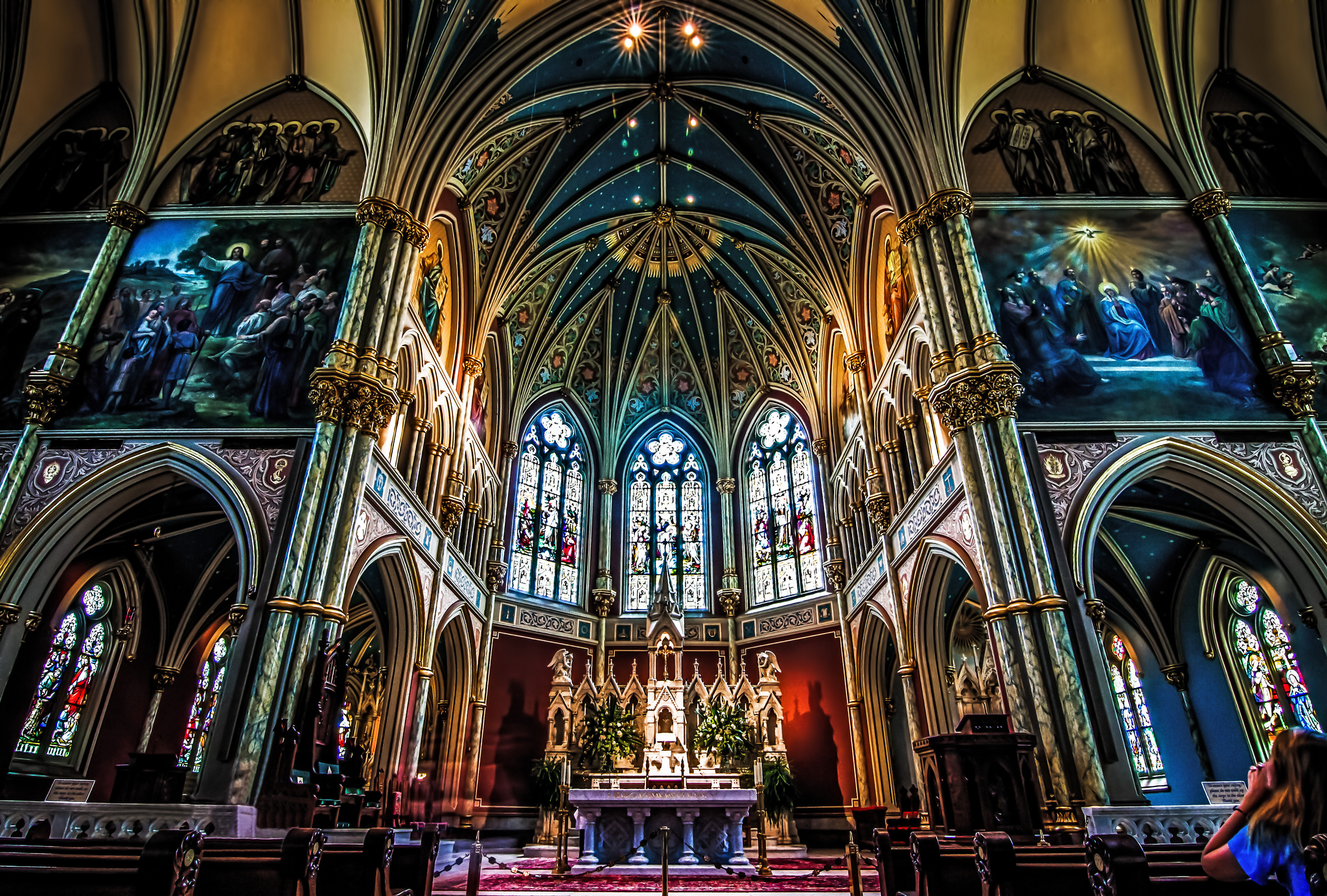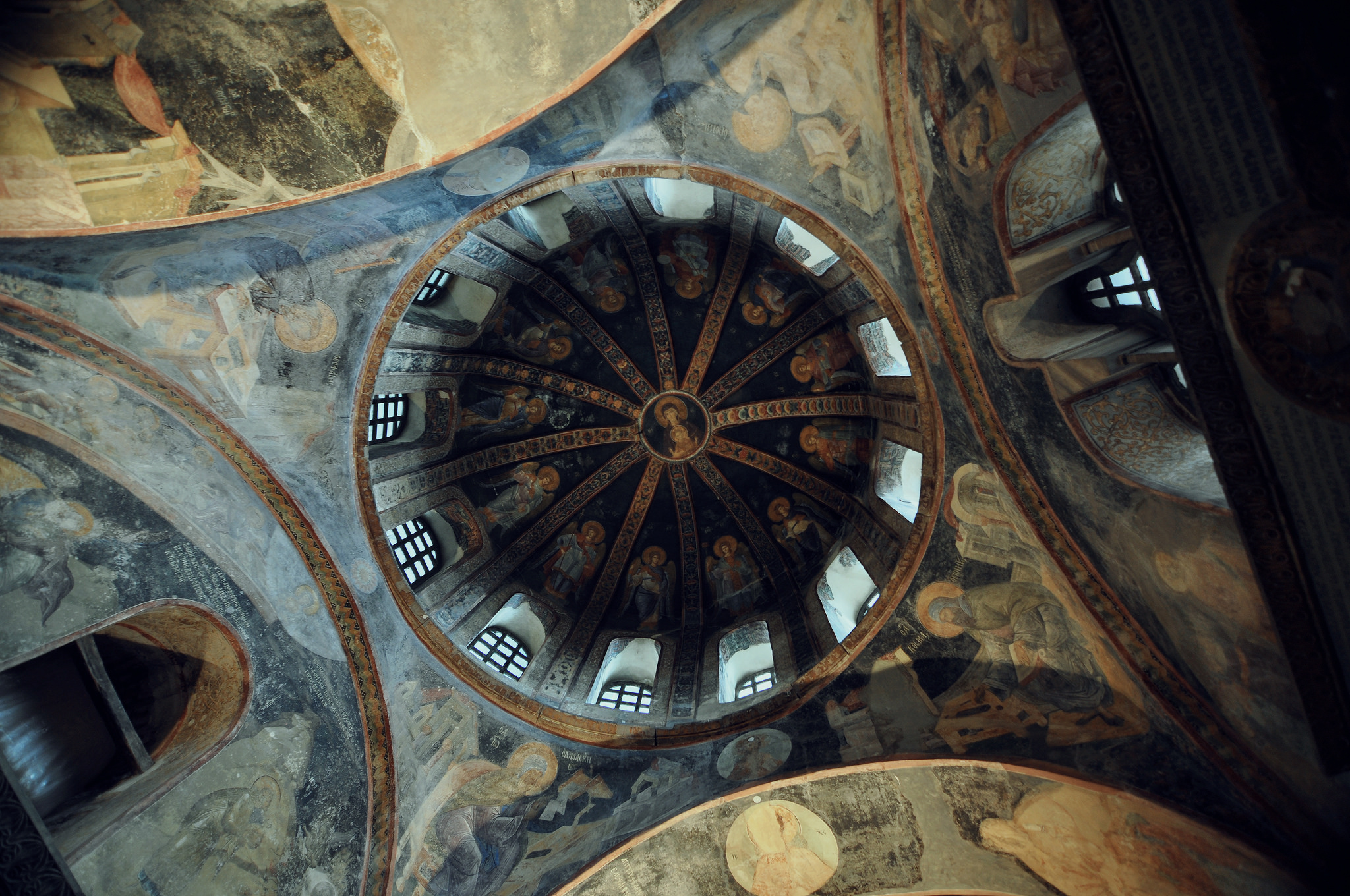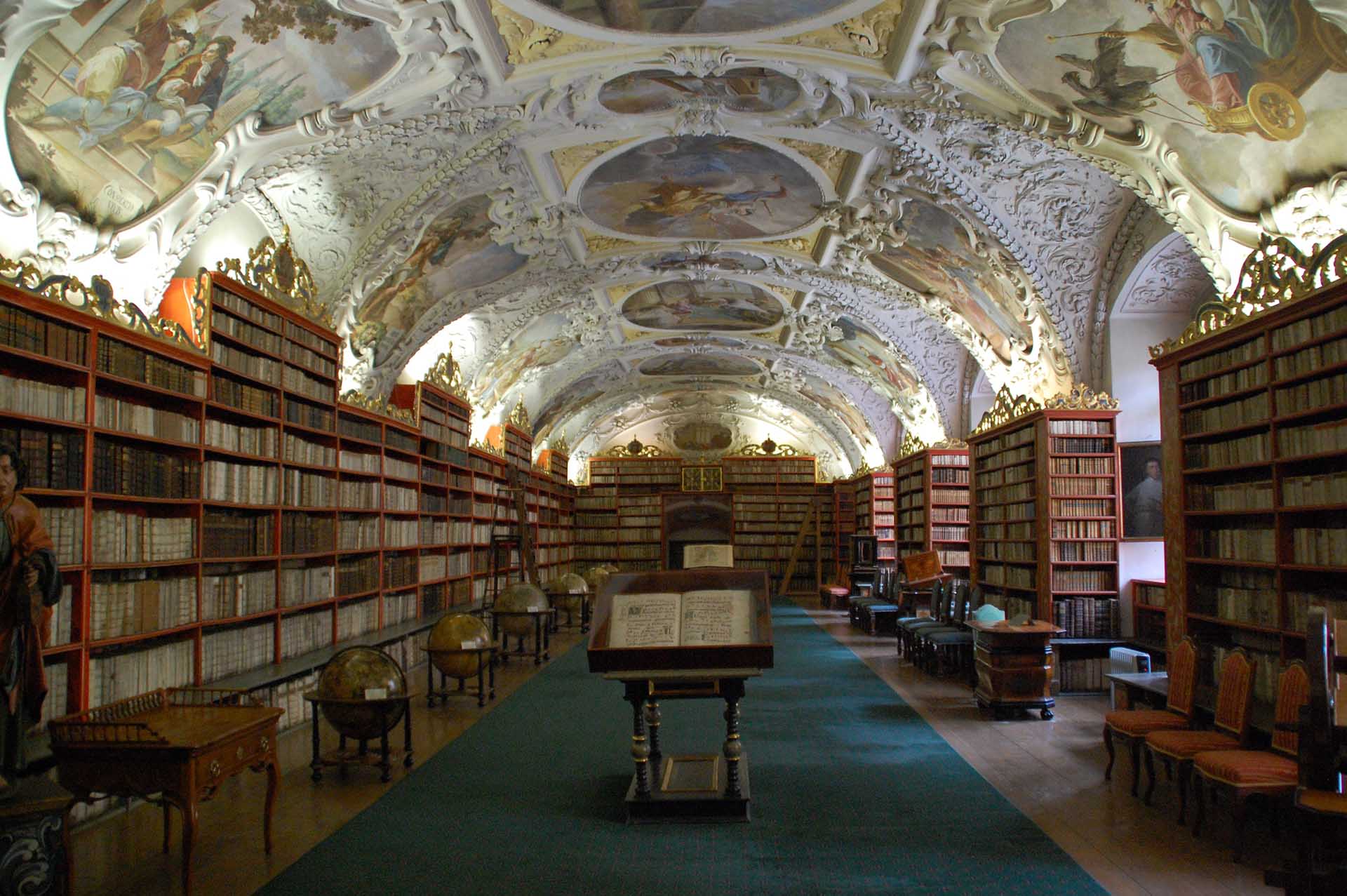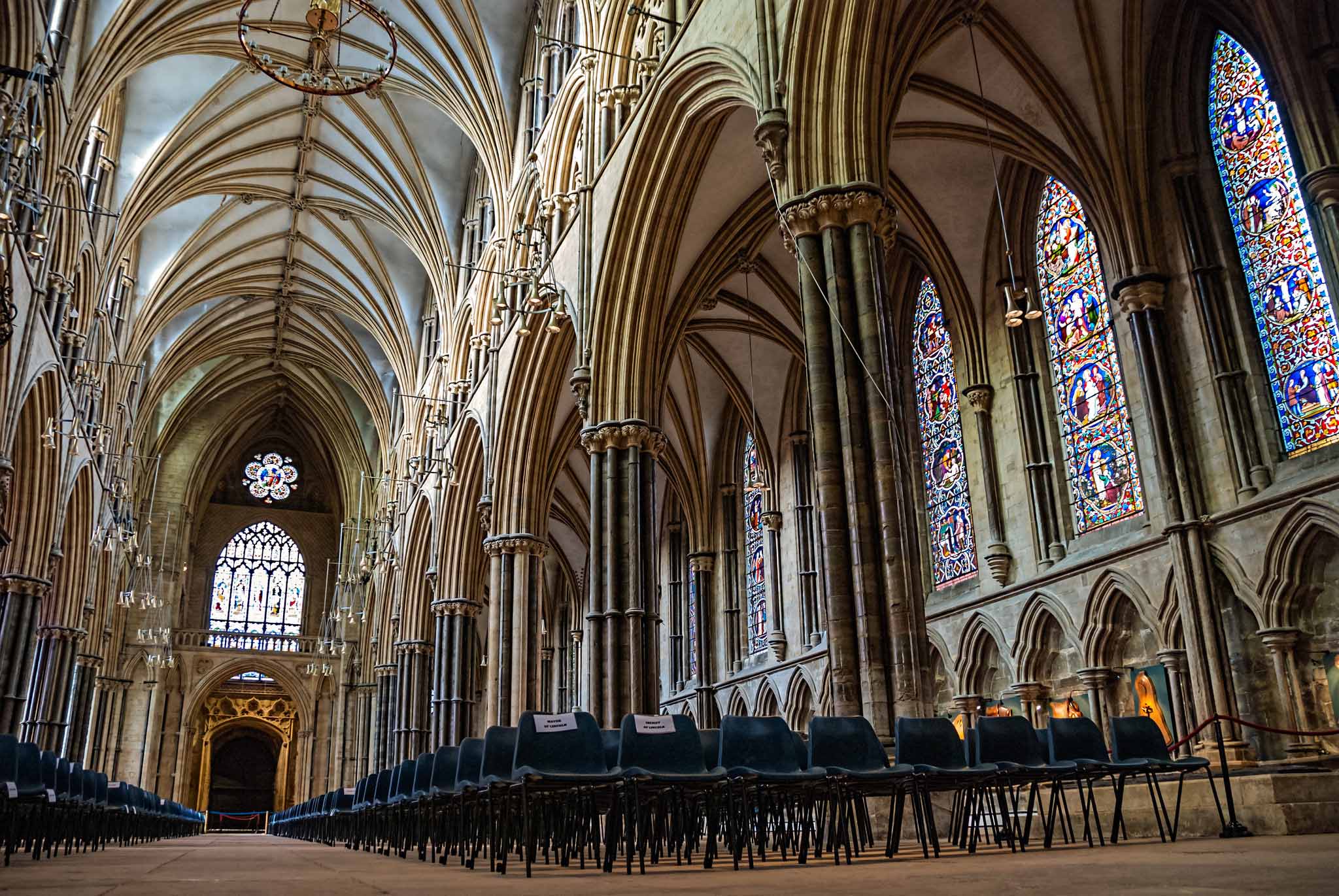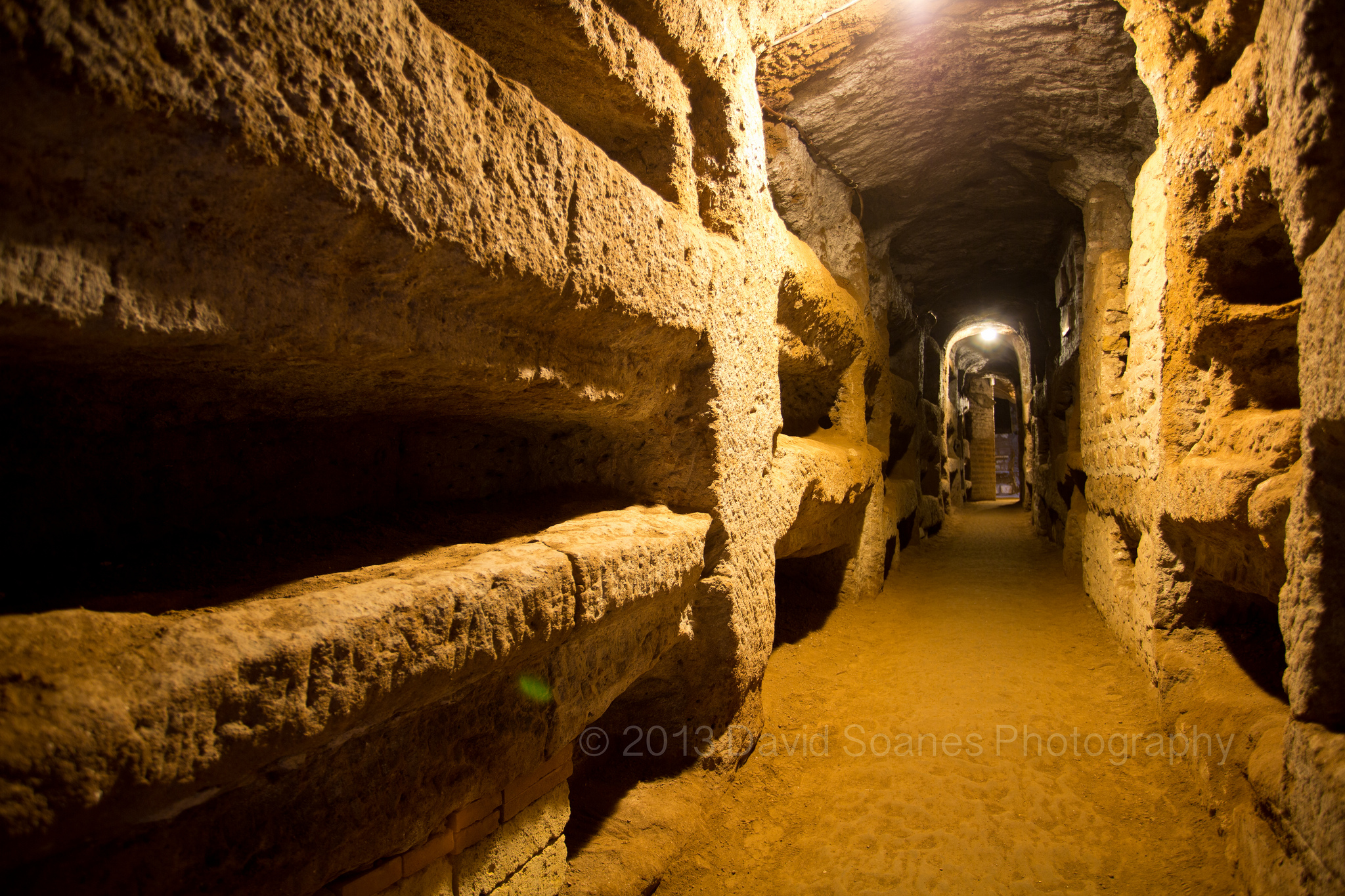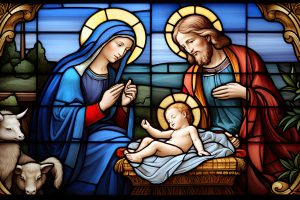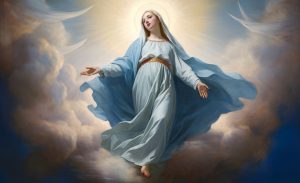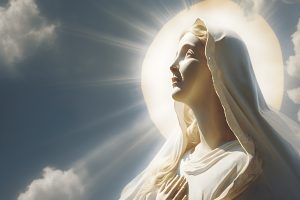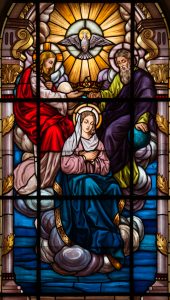
New pray at home converts: beware of video & CD “Catholicism”
+The Circumcision+

Prayer Society Intention for January, Month of the Holy Name
“We wish to make reparation each day, dear Jesus, for those who profane Thy Holy Name.”
A reader has recommended as excellent the sermons of St. Alphonsus Liguori HERE. Video sermons are one of the ways that the wisdom of the saints can be made available to Catholics today. Such unabridged sermons in audio form coming from saints and approved members of the hierarchy are what true Catholics should be accessing, and this is the topic we are addressing here.
An unsettling beginning to the New Year
It has come to my attention that once again, there is an ongoing effort by certain individuals also advocating praying at home to “collect” those exiting the Novus Ordo and various LibTrad sects by appealing to this younger set via videos, podcasts and other venues. The reasons for concern regarding these efforts will be explained below.
In 1990, my first work Will the Catholic Church Survive…? was released to the public, calling for a papal election. At that time I had been praying at home since 1985. The book explained in depth why Angelo Roncalli and Giovanni Montini were ineligible for election to the papacy, offering proofs of their ineligibility and using Pope Paul IV’s 1559 Bull Cum ex Apostolatus Officio to prove they could never have been validly elected. It also provided dogmatic and canonical proofs that LibTrads possessed no jurisdiction, were at least questionably valid and were committing sacrilege by offering mass and sacraments to their followers. The case for praying at home was then presented on the basis of Bd. Pope Innocent XI’s teaching that one cannot receive questionably valid and illicit sacraments without sinning mortally against the first commandment. That was 35 years ago, when those now promoting praying at home on their blogs and social media platforms were still members of the Novus Ordo sect.
These important proofs were the fruits of long years of study, 10 to be exact, and many trips to the local seminary library to purchase books and fill my library with theological works. But it is following the inevitable consequences of these proofs made public so long ago that people find so challenging, even mind-boggling. For once it is realized that both Roncalli and Montini were heretics (Modernists not to mention Freemasons) prior to their respective elections, as even sedevacantists realized in the early 1980s, such elections were then considered non-existent, as explained in my 1990 book. This was clear from reading Pope Paul IV’s Bull Cum ex Apostolatus Officio, first available in English in the mid-1980s. The 1990 book was the second published defense of Cum ex Apostolatus Officio, first translated into Spanish by Dr. Carlos Disandro in 1978, following the attacks of the St. Pius X Society and other LibTrads. So since the elections of these men were invalid as the Bull infallibly proclaims, nothing whatsoever which followed really happened; it was all an illusion.
And if an illusion, there was no need to spend any time tediously refuting the errors introduced by Montini and Roncalli — ALL their acts could be dismissed wholesale. This is a truth infallibly confirmed by Pope Pius XII in his 1945 papal election constitution, Vacantis Apostolicae Sedis. No election of Roncalli and hence Montini means there was never a false Vatican 2 council; nor were there ever changes to the liturgy, the sacraments or Catholic doctrine. And ecumenism, condemned as a heresy by both Pope Pius XI and Pius XII was never endorsed by a true pope. All of these things were made null and void by Roncalli’s non-election and Pope Pius XII’s election law and are entirely unworthy of any consideration. THAT is the reality all have failed to grasp. It is further confirmed by St. Robert Bellarmine’s teaching that a doubtful pope is no pope, a principle evidenced in the actual practice of the Church.
So all the time spent in various debates, also constant Internet coverage and criticism of Novus Ordo events and errors has only made it more difficult to discover, address and denounce the true consequences of the vacant see, also Modernist tendencies within the Church pre-1959 that led to Vatican 2. Had the line been firmly drawn at the death of Pope Pius XII and the invalid election of Roncalli and the pre-1959 errors that LED to Vatican 2 addressed once the full extent of the damage was realized, the Traditionalist movement with all its errors would never have predominated.
St. Paul taught, “But prove all things, hold fast to that which is good” (1 Thess. 5:2). The Jews of Berea “Received the word with all readiness of mind and searched the Scriptures daily, whether these things were so,” we read in Acts. Who among even those still calling themselves priests really did this? It was laymen, not the clergy, who uncovered Pope Paul IV’s Cum ex Apostolatus Officio. It was a layperson who insisted upon obedience to Pope Pius XII’s Vacantis Apostolicae Sedis and his teaching that the bishops are entirely subordinate to the pope. Rev. Joaquin Saenz-Arriaga may have commissioned Anacleto Gonzalez-Flores to write The Plot Against the Church, attempting to halt Vatican 2, and he did declare the see vacant and Montini the Antichrist in the mid-1970s. But what was the true value of what he did seeing that he founded the Orthodox Roman Catholic Movement (ORCM) and was later discovered to be a Freemason?!
Failure to provide proofs, credit others
Any research conducted then was never followed through to its logical conclusions where jurisdiction and the necessity of the papacy was concerned. And those still muddling around in the errors of the Novus Ordo sect are only returning to the vomit that led us down the wrong path in the first place. The teachings of the Continual Magisterium must be the focus of any attempts to win souls today, and those still mucking around in the Novus Ordo or LibTrad sects simply need to be told that the burden of proof, according to Canon Law, is on THEM, not on us — no debates, no back and forth, nada. Pope Pius XII drew the line in VAS and we are merely holding that line. If they could prove that infallible document does not apply to them, THEN there might be a discussion, but that can never be the case. Signed papal documents entered into the Acta Apostolica Sedis can never be contested.
Unfortunately other bloggers and social media personalities promoting praying at home today refer to these decades-old proofs but do not refer them to any source; or they act as though these proofs are self-evident or known to their audience in some other way. They do not themselves produce proofs drawn from Scripture, the continual magisterium, Canon Law and the scholastics, as Holy Scripture and the Church demands but only vaguely reference them. And what they do produce is often taken from what is quoted by others. (And my sincere thanks to those who do give proper attribution in their efforts to promote praying at home.)
And while they may warn others against practicing doctrinal minimalism or insist that one must carry the logical consequences represented by the facts through to the very end, they do neither of these things and only continue to further confuse those already swimming in a sea of confusion. This because they resort to sophistry by begging the question, assuming as true that which they have not yet proven as true to those they are addressing. They then proceed to the illogical scholastic arguments known as false induction and false interpretation, owing to the errors mixed in with their assertions.
They are thus in violation of the moral law and Catholic ethics by failing to render attribution to those before them who have resolved theological issues by quoting the popes, the councils, Holy Office decisions, Canon Law and the works of approved authors. The collection and actual presentation of those facts in logical order, from various sources, is a product of the intellect and is considered intellectual property. And yet individuals presenting as bona fide Catholics and defenders of the faith encourage others to pray at home but do so only by accommodating the research and conclusions of previously copyrighted works written by others.
And what is even worse is their subtle addition of errors to these teachings, making it appear that other authors also endorsing praying at home are in agreement with them. All this is then passed off as THEIR OWN invention and conclusions, and this can result in grave moral and legal consequences. For this sin against the seventh commandment they are bound to make restitution, for some even sell works over the Internet based on the non-attributed works of others. Are we not justified then in questioning their sincerity, honesty and motives and in demanding an accounting?!
Not only do they fail to condemn all LibTrad clergy and their operations as invalid per Pius XII’s VAS, but they also maintain “friendships” with those in that sect and even continue to promote the writings of those who frequent or have frequented it. After a second warning, a heretic avoid is the general rule. Yet despite solid evidence readily available for review that these pseudo-clerics and lay leaders have led others astray and have been guilty of errors in their thinking and writing, these “friendships” are not abandoned. Instead, the same attitude prevalent among the LibTrads is adopted — to label anyone of that sect a heretic is a gross violation of charity. This can only be described as cooperation in heresy and a perfect example of liberal charity in action. And this we have already addressed at length before.
Do videos, podcasts etc. effectively convey the faith?
One of the requirements most crucial to theological discussion (NOT debate) is the following: “Theologians must… be able to teach effectively and clearly” as Msgr. Joseph C. Fenton notes, and any credible journalist knows the value of clear and concise verbiage in explaining complicated issues to the public. Video and Internet commentary and debate, especially if lengthy (some run into several hours!) and punctuated with unrelated queries and minutiae, often interrupts the listener’s ability to absorb the essential elements of theology necessary to understand the true teachings of the Church. Few people have time to sort through such lengthy discourses, and yet this is what they are expected to do to learn the truth.
Such presentations have even been touted as “brilliant.” But discriminating readers who want the full story, as one reader pointed out, will demand more than such disjointed presentations of the faith. They will take the time to read written works examining the various errors of the day condemned by the popes and councils and will ponder them, for this is the way taught by the theologians to truly arrive at a better understanding of the truth. Confusion is to be avoided at all costs.
Until the advent of television in the 1950s, faith was either received by hearing or in written form — study meant reviewing written notes from lectures or taking copious notes from textbooks to process or memorize. Pope Pius XII heartily approved of the modern means to transmit the faith (movies, television, radio) in his Miranda Prorsus, but only when free from any hint of doctrinal or moral error. And certainly he was not aware at that time of the actual mesmerizing effects of television, something that would only later be discovered. Over time, television also was linked to anti-social behavior among young people and a lowering of their IQ scores, and this is no surprise. For it is by our use of language that we communicate our thoughts to others by talking, reading, and writing, not just talking alone.
Television, videos and CDs provide no such exchange. They are a one-way form of communication with no question-and-answer period or the ability to challenge or evaluate content. If not carefully monitored for subject matter, it is more akin to a propaganda tool than an educational vehicle. So if these mediums are employed to promote the faith it must be sparingly, and only in a judicious manner, since these means have never been properly vetted or evaluated by the Church.
One of the reasons CD, podcast and video “Catholicism” is so popular is something I will call fad Catholicism. Written presentation is “old hat” because it requires the application of the intellect and the understanding. Videos and podcasts are the way to go, the “in” way to get your daily dose of “truth” from a popular personality appearing on a well-traveled social media platform. It tends to the adoption of a modern-day outlook on things, the development of personality cults and the fan club mentality. It measures truth by “likes,” a nod to the opinions of the mob.
These communication methods may be used productively to summarize truths of faith and direct people to source material where everything appears in written form, confirming those truths. But the complexity of the situation in the Church today is not suited to glib video or audio presentations. Explanations of the various errors and the truths they contradict must be read, understood, studied and studied again. Notes must be taken, if one is serious about understanding it. Questions must be asked and answered by those knowledgeable about the subject, and I have answered my fair share of these. None of this can be effectively accomplished with podcasts and videos, which only produces and further encourages the practice of intellectual laziness.
Are Catholics allowed to debate non-Catholics?
We are obligated by Canon 1325 §1 and §2 to profess our faith and defend it publicly whenever silence, subterfuge or our manner of acting would indicate our acceptance of such errors; that is all. But Can. 1325 §3 must also be carefully considered: “Catholic shall not enter into any disputes or conferences with non-Catholics, especially public ones, without the permission of the Holy See, or in urgent cases, of the local ordinary” (Revs. Woywod-Smith commentary). Revs. T. Lincoln Bouscaren and Adam Ellis comment on this canon:
“This prohibition applies only to matters of faith and to public discussions viva voce; printed debates or conferences are subject only to the rules regarding books.” Dom Charles Augustine states in his commentary on this same canon: “The Sacred Congregation has often expressly forbidden [such debates] on the ground that they do more harm than good, since false eloquence may cause error seemingly to triumph over truth… When such disputations are expressly permitted, care should be taken that only capable and prudent speakers be employed to defend the Catholic side.”
No individual can be a judge in their own case of whether they are capable or prudent. Nor can anyone but the Holy See or the bishop act as judges in such cases. Some have argued that the prohibition of Can. 1385 forbids anyone to publish without ecclesiastical approval, but this is an impossible law to obey in these times since there is no hierarchy to grant such permission. Therefore the law ceases to bind. The higher law prevails, and that law is to defend the faith re Can. 1325 §1 and §2.
There is also the obligation to aid our neighbor in extreme spiritual necessity, obey the longstanding papal command to supply for the absence of the hierarchy by engaging in Catholic Action and the catechetical apostolate and the duty to avoid the heresy of quietism, which teaches: “…the desire to do anything actively is offensive to God and hence one must abandon oneself entirely to God and thereafter remain as a lifeless body” (Catholic Encyclopedia, 1912). All this can be fulfilled by producing written refutations of error, which is less dangerous by far than debates.
And something else should be considered here — those watching and promoting such debates are guilty of cooperating in the sin of the one conducting them, since the Church forbids it. Here we see the value of obedience, not attachment to our own will and the desire to engage in worldly novelties. This is the reason for not presenting our own suppositions and opinions, to obey the teachings of the Continual Magisterium and those theologians approved by the Church and not follow those who have never been approved by the Church to instruct or debate. In this way those approved by the pre-1959 Church are still teaching us, even if we place these teachings in context regarding our current situation. Videos, CD’s and podcasts cannot successfully convey these teachings in their entirety. Readers should not confuse what I only RELAY on this site with my status as a writer or presenter. As Catholics we are obligated to defend the faith publicly — it is not an option.
Putting a price on the faith
So although I greatly appreciate and depend upon the generosity of my donors to meet maintenance costs for my site, I have not stressed the need for readers to donate or made appeals for monetary contributions. I do what I do because God requires an accounting from me. Making an actual business of defending the faith is tantamount to the moneylenders selling their goods in the Temple. Christ did not put a monetary value on what He taught, although he did say that the laborer is worthy of his hire. Therefore, while it is commendable to help support the maintenance of websites that teach the truth it is a voluntary thing. The Church has never demanded that one tithe any given amount under pain of sin.
But on the other hand Catholics should be very conscious of who they are donating their money to and where it might be going. Many people will take the comments or advice of those who they are promoting as great orators or defenders of the faith without really looking into their background and it’s essential that such a thing be done. In many cases these self-proclaimed experts sport degrees or credentials from non-Catholic (including LibTrad) sources, and these should be considered as a detriment, not a recommendation (see the article here). There are those who now promote praying at home who have inexplicably bounced around in their thinking processes and their stated beliefs to such an extent that one could justifiably question the reasoning behind their many inconsistencies. This is especially true if they advertise themselves as well-educated and well-connected.
Case in point: David Bawden once chastised me for neglecting my daily duties to my family by writing to defend the faith instead of devoting time to these duties. This even thought I was writing with my husband’s express permission and my children were nearly grown. Also, I had worked full time or part time since 1987 (retiring in 2020) in addition to my household duties and writing efforts. I felt this was quite presumptuous of Bawden, particularly since he had seldom been gainfully employed and was at the time demanding that we support him (as “pope”). I later found other instances among those claiming to defend the faith full time without a steady income of any kind, relying mainly on their supporters to fund their defense of the faith.
This certainly is not Catholic since our daily duties must always come first. And as stated above, our efforts should not be considered as optional or a service provided to others that should be compensated, but our bounden duty as Catholics commanded to profess their faith when not doing so would constitute a denial of that faith.
Spotting written or spoken red flags
Most of us have been mistaken and fallen into error at different times in matters of faith. But those who then go on to try and defend the faith after publicly renouncing their errors and making reparation for the damage they have caused (whenever possible) must then hold themselves to a certain standard, especially on the public forum that is the Internet. Recent examples of renewed efforts to attract members of the Novus Ordo sect and LibTrads to pray at home are sadly lacking in a complete grasp of the true status of Traditionalist pseudo-clergy, despite their claims to the contrary. Prudence demands we vet these individuals carefully, especially when we detect the following:
- Doesn’t use proper Catholic terms
- Inconsistency in statements related to truths of faith
- Promotion of works produced by non-Catholics
- Cooperation or the appearance of cooperation with non-Catholics
- Skirts issues regarding the validity of Traditionalist orders
- Does not openly condemn Traditionalism including sedevacantism as heresy (when as one reader has aptly pointed out, Traditionalism is worse by far than the Novus Ordo sect)
- Vague references that are not fully explained (ambiguity) or sufficiently cross-referenced
- Failure to practice what they preachSelf-promotion, name dropping
- Repeated appeals for financial support, especially when voluntarily unemployed
- Failure to:
- follow scholastic form, as they are bound by the Church to do
- properly attribute sources and faithfully cite the works of others
- make the necessary theological connections
- address, correct and renounce errors when corrected (incorrigibility, pertinacity)
- renounce previous false teachings publicly and retract any errors
- advise readers of his/her non-approved Church status by insisting on adherence to the teachings of the popes, Councils, Canon Law and approved theologians.
- Refer readers to the original sources, not their commentaries or thoughts on these sources.
Conclusion
If efforts be made to attract those trapped in non-Catholic sects to the practice of praying at home are to be successful, there must first be a meeting of the minds among those promoting the practice of the faith at home regarding the dogmas on which our faith is based. I have long advocated for this united effort but I have been consistently shunned, falsely charged with teaching error, and my attempts to correct others who likewise advise Catholics to pray at home but who hold false doctrines have been ignored. What I have insisted upon is that the Church’s clear teachings regarding heresy and jurisdiction be properly understood and obeyed if one is to truly sever ties with Traditionalists and other non-Catholic sects and keep the faith at home. The Church teaches only one truth. In accord with the scholastic method, I have repeatedly offered numerous proofs from papal and conciliar documents, also Canon Law, to demonstrate what the Church teaches.
Similar proofs, however, have not been produced by those claiming to lead others to the conclusion they must practice their faith at home. Nor have they bothered, as they are obligated to do, to refute any of these proofs by producing credible evidence they are in error, even though this is required by Canon Law. Time is a precious commodity and our time on earth is short. Christ could return at any moment, asking why we have not prayed and watched. Praying and watching does not include wasting our time “watching” hare-brained videos. Watching means setting a guard over oneself to avoid the snares of the enemy as outlined above, not credulously lapping up the visually regurgitated meanderings of those fascinated with Novus Ordo deviancy. Those considering praying at home deserve the truth; they deserve a united dogmatic front which the Church has always maintained to support them in making such a life-changing decision. They do not deserve to be led down yet another rabbit hole or diverted from verifying what is said for themselves, only later to discover they were misled and misinformed.
What all should seek is the highest possible degree of unity we can obtain among those praying at home without a visible Roman Pontiff and hierarchy. As Henry Edward Cardinal Manning wrote: “Truth goes before unity. Where truth is divided, unity cannot be. Unity before truth is deception. Unity without truth is indifference or unbelief. Truth before unity is the law and principle and safeguard of unity” (The True Story of the Vatican Council, 1877). Do those accommodating the works of others and sidestepping issues of heresy and sacramental invalidity show any respect for the truth? Are they ”consistent Catholics?” You decide.
